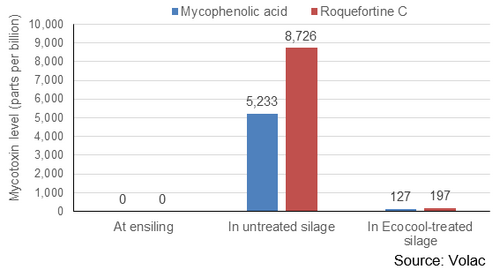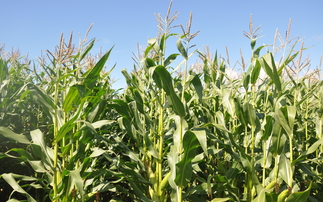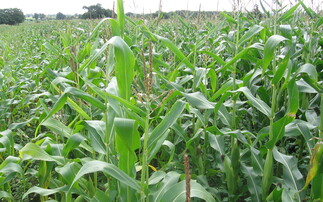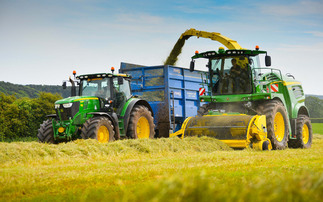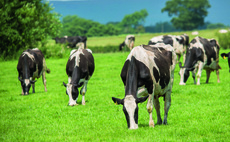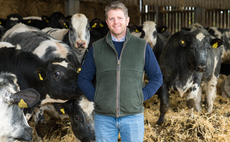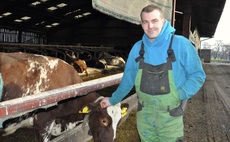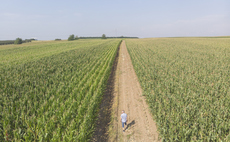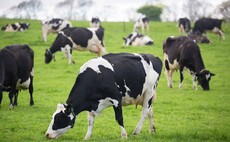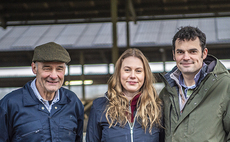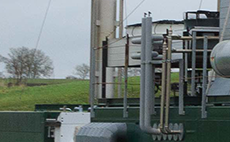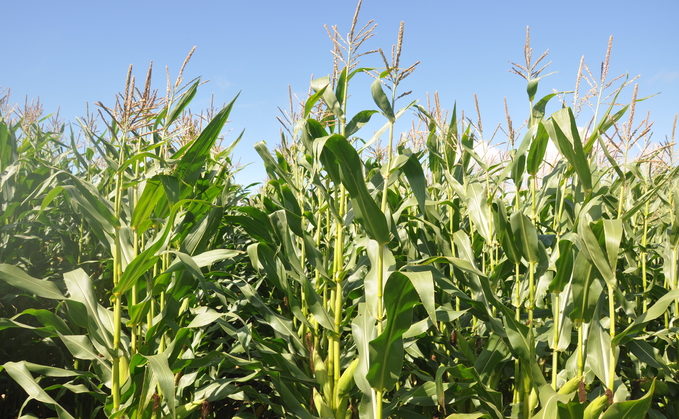
Ensiling forage maize with the dual-acting additive, Ecocool, which aids fermentation and targets yeast and mould growth, can prevent significant mycotoxin accumulation in silages exposed to air.
But where a high level of mycotoxin is already present in the harvested crop, neither the ensiling process nor the additive can remove this. In this case, a separate specialist mycotoxin treatment is required.
Those were the conclusions from Volac silage scientist, Dr Mark Leggett, based on new research by the company on a maize crop harvested last November. With this year's warm, damp growing conditions potentially favouring moulds and mycotoxins in maize, results could be particularly timely, he says.
"Analysis of the untreated crop in the research revealed that levels of the mycotoxins, mycophenolic acid and roquefortine C, which are produced by Penicillium moulds, increased from zero at ensiling to more than 5,000 and 8,000 parts per billion (ppb) respectively by the time the crop had been ensiled for 95 days and then exposed to air for 12.8 days," explains Dr Leggett.
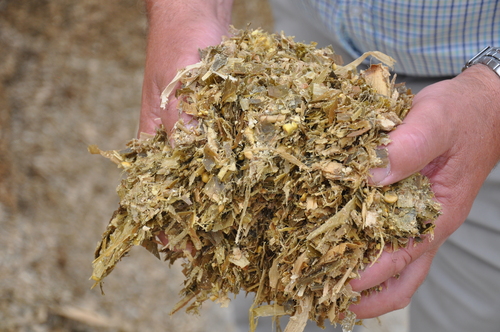
"Importantly, however, when the Ecocool additive was applied to the crop at ensiling, accumulation of both these mycotoxins was controlled to levels 98% lower than in untreated silage.
"Ingestion by livestock of silages contaminated with mycophenolic acid or roquefortine C is associated with appetite suppression, poor rumen function, ketosis, and immune suppression.
"There was clear evidence of Ecocool significantly improving the hygienic quality of the silage due to the action of the additive against yeasts and moulds during exposure to air."
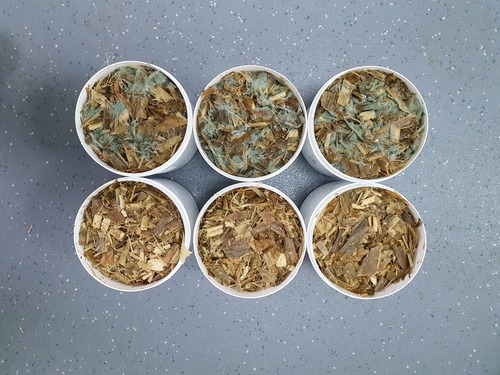
Dr Leggett says yeast and mould growth generally occurs following exposure of silages to air in a process called aerobic spoilage; a cascade of events triggered initially by yeast breaking down the important silage acid – lactic acid.
"In turn, this raises silage pH, which allows mycotoxin-producing moulds to grow in the silage," explains Dr Leggett. "The clearest sign that silage is suffering aerobic spoilage is usually the production of heat.
"As well as containing beneficial ‘MTD/1' bacteria to generate lactic acid, Ecocool contains a second beneficial bacteria, ‘PJB/1', that produces acetic acid to inhibit yeast and mould growth. A little over a month after ensiling, yeast levels in the Ecocool-treated silage were already 96% lower than in the untreated, with further measurements revealing the untreated silage took just 1.5 days to start heating when exposed to air, compared with 3.5 days for the Ecocool-treated. If silage is heating, it's losing a massive amount of energy."

Although the crop at ensiling contained no detectable mycophenolic acid or roquefortine C mycotoxins, levels at ensiling of another mycotoxin, DON (deoxynivalenol), produced by Fusarium moulds, were found to be more than 10,000 ppb, Dr Leggett points out. "With DON already present in the harvested crop, it is important to note that ensiling, with or without the additive, did not reduce these very high levels of DON contamination," he adds.
"Indeed, DON levels rose to more than 17,000 ppb in the untreated and treated silage after ensiling and exposure to air. In cases like this, a specialist mycotoxin remediation treatment, such as Ultrasorb from Volac, would be needed to reduce the mycotoxin burden of such silages in the final feed when fed to animals. A fourth mycotoxin, ZON (zearalenone), was also detected in the silage but at low levels.
"As well as mycotoxin measurements, the research also examined silage nutritional quality in terms of its neutral detergent fibre digestibility (NDFD). NDFD in the treated maize silages was found to exceed that of the untreated silage by as much as 4%, after exposure to air. This is significant because increasing NDFD is associated with improved milk yield."
